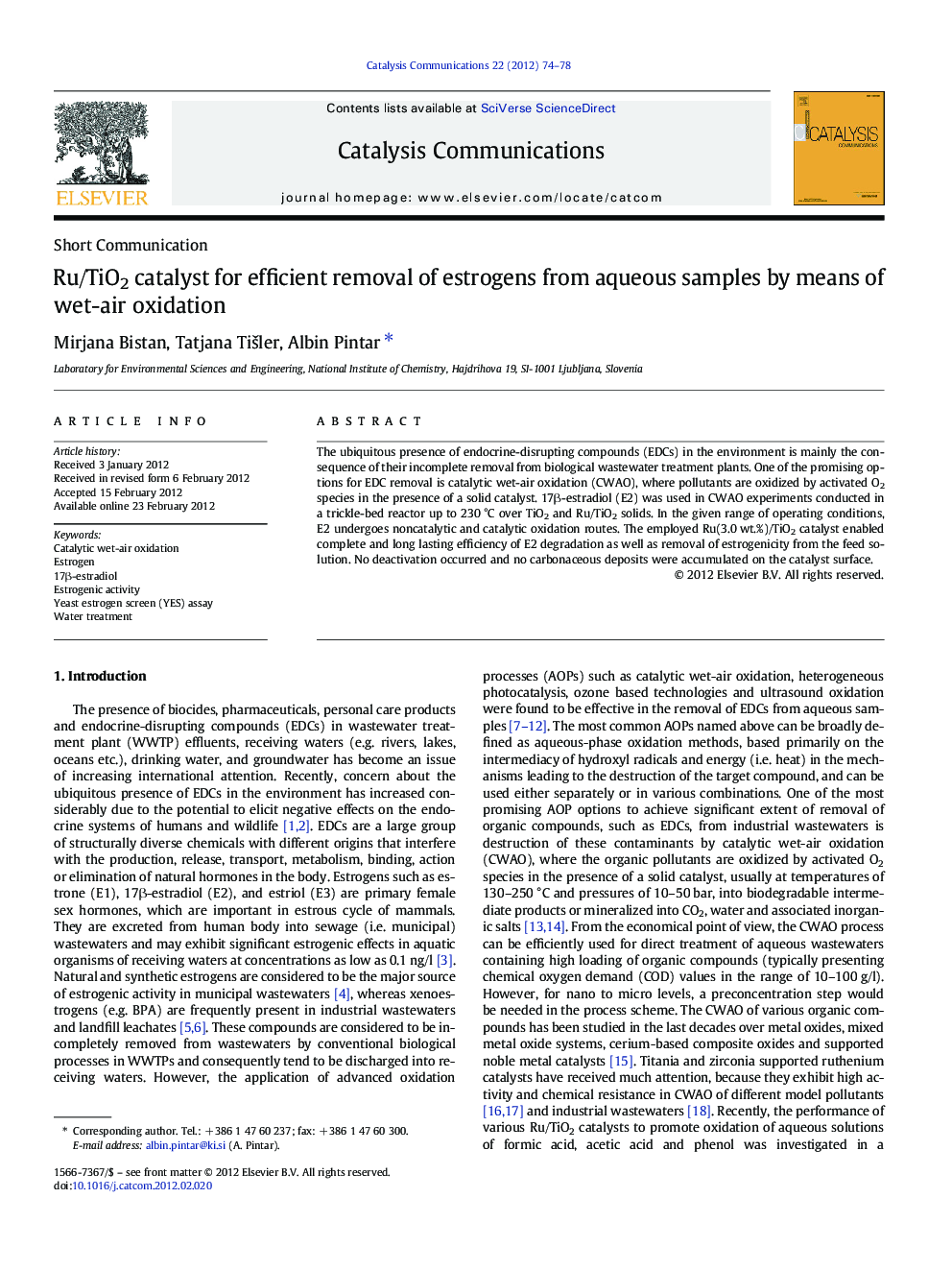| Article ID | Journal | Published Year | Pages | File Type |
|---|---|---|---|---|
| 51382 | Catalysis Communications | 2012 | 5 Pages |
The ubiquitous presence of endocrine-disrupting compounds (EDCs) in the environment is mainly the consequence of their incomplete removal from biological wastewater treatment plants. One of the promising options for EDC removal is catalytic wet-air oxidation (CWAO), where pollutants are oxidized by activated O2 species in the presence of a solid catalyst. 17β-estradiol (E2) was used in CWAO experiments conducted in a trickle-bed reactor up to 230 °C over TiO2 and Ru/TiO2 solids. In the given range of operating conditions, E2 undergoes noncatalytic and catalytic oxidation routes. The employed Ru(3.0 wt.%)/TiO2 catalyst enabled complete and long lasting efficiency of E2 degradation as well as removal of estrogenicity from the feed solution. No deactivation occurred and no carbonaceous deposits were accumulated on the catalyst surface.
Graphical abstractFigure optionsDownload full-size imageDownload as PowerPoint slideHighlights► Treatment of aqueous 17β-estradiol (E2) solution by catalytic wet-air oxidation. ► The use of catalysts enables complete removal of E2 and estrogenicity. ► Long-term stability of Ru/TiO2 in catalytic wet-air oxidation process was observed. ► No reaction intermediates that exhibit estrogenic effects were formed.
